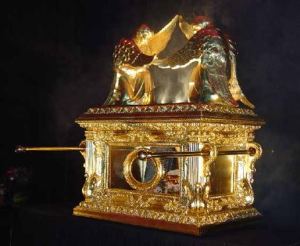When Did John See the Vision of The Revelation of Jesus Christ, and Why Does it Matter?
REVELATION’S EARLY DATE (1)
 PMT 2015-070 by Kenneth L. Gentry, Jr.
PMT 2015-070 by Kenneth L. Gentry, Jr.
In this two-article series, I will briefly present the basic evidence for Revelation’s pre-AD 70 composition. A preteristic understanding of Revelation is strongly (though not absolutely) linked with its early dating. And the dating of Revelation is not a theoretical assumption, but is based on exegetical evidence.
There are two basic positions on the dating of Revelation, although each has several slight variations. The current majority position is the late-date view. This view holds that the Apostle John wrote Revelation toward the close of the reign of Domitian Caesar — about A.D. 95 or 96. The minority view-point today is the early-date position. Early-date advocates hold that Revelation was written by John prior to the destruction of Jerusalem and the Temple in A.D. 70.
I hold that Revelation was produced prior to the death of Nero in June, A.D. 68, and even before the formal engagement of the Jewish War by Vespasian in Spring, A.D. 67. My position is that Revelation was written in A.D. 65 or 66. This would be after the outbreak of the Neronic persecution in November, 64, and before the engagement of Vespasian’s forces in Spring of 67.
This Article is only shown in part. The following is the most intriguing aspect of the Revelation account, consider this:
(2) Revelation 11:1, 2, written by the beloved disciple and hearer of Christ, seems clearly to draw upon Jesus’ statement from the Olivet Discourse. In Luke 21:5-7, the disciples specifically point to the Herodian Temple to inquire of its future; in Revelation 11:1 John specifically speaks of the Temple of God. In Luke 21:6 Jesus tells his disciples that the Temple will soon be destroyed stone by stone. A comparison of Luke 21:24 and Revelation 11:2 strongly suggests that the source of Revelation’s statement is Christ’s word in Luke 21.
- Luke 21:24b: “Jerusalem will be trampled underfoot by the Gentiles until the times of the Gentiles be fulfilled.”
- Revelation 11:2b: “it is given unto the Gentiles: and the holy city shall they tread under foot for forty and two months.”
The two passages speak of the same unique event and even employ virtually identical terms.
(3) According to Revelation 11:2 Jerusalem and the Temple were to be under assault for a period of forty-two months. We know from history that the Jewish War with Rome was formally engaged in Spring, A.D. 67, and was won with the collapse of the Temple in August, A.D. 70. This is a period of forty-two months, which fits the precise measurement of John’s prophecy. Thus, John’s prophecy antedates the outbreak of the Jewish War.
(4) After the reference to the destruction of the “temple of God” in the “holy city,” John later speaks of a “new Jerusalem” coming down out of heaven, which is called the “holy city” (Rev. 21:2) and which does not need a temple (Rev. 21:22). This new Jerusalem is apparently meant to supplant the old Jerusalem with its temple system. The old order Temple was destroyed in August, A.D. 70.

0 Comments